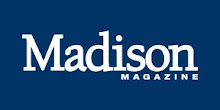In our northwoods cottage, the kitchen is command central. It’s the first room you enter, where the crowds gather and disperse. It’s where you’ll always find a bottle of sun block or bug spray, where you stack the books, magazines and movies you’ll enjoy, and where you make the grocery list (Don’t forget the marshmallows!). On a top shelf next to the pantry is where the cookbooks live. Some come and go with the vacationer—a favorite recipe you didn’t have time to copy before you left home. The rest are donated to the cottage because the recipes inside have summer vacation written all over them.

The first one that found a permanent home up north is appropriately titled, The Northwoods Cottage Cookbook, by Isthmus food critic Jerry Minnich. Fine writer and friend John Motoviloff reviewed it in Madison Magazine a few years back, and when I saw it at the Wisconsin Historical Museum a short time later, I bought it for our cottage. Imagine my surprise when I turned to the page that dedicated the book to friends of mine on Plum Lake. Turns out many of Minnich’s fondest northwoods memories—and well-worn recipes—were from time spent in Sayner, Wisconsin, my family’s summer home for the last six generations. Now that I know Jerry and I have shared some of the very same breathtaking lake views and calls of the loons, I have to say he’s spot on when he insists that cooking at the cottage be hearty and tasty but shouldn’t turn into a production. Why? Because a northwoods sunset waits for no one, not even the cook.
Another reason the recipes should be short and straightforward is that when you stay at a summer cottage, the person who starts the meal isn’t necessarily the same person who finishes it. This happened just the other day and provides the perfect example.
Husband and brother-in-law bring home a basket full of perch for dinner. Husband cleans and filets them and then excitedly heads back out to the boat muttering something about needing a few more fish to feed the whole family. Since time apparently flies when you’re fishing (always seems to me like it stands still), dinnertime rolls around and husband hasn’t returned with the rest of the day’s catch, not to mention his mother's fish-fry recipe he keeps tucked inside his noggin
 .
.As luck would have it, I’d brought a new cookbook to add to the kitchen shelf called Apple Betty & Sloppy Joe, a delightful collection of childhood stories and recipes by four sisters who grew up in Oshkosh and vacationed in the northwoods. The book was out on the kitchen counter because I was in charge of the potato dish and found a simple recipe for the mashed variety: butter, hot milk, salt, done. By the time I’d changed out of my bathing suit and headed downstairs my sister had already scrubbed and dropped a dozen red potatoes into the pot to boil. I’d finish the dish while she tended to the kids. Meanwhile the bro-in-law steps in to fry the fish with another breezy recipe from Apple Betty for pan-fried trout. Flour, salt, pepper, beaten eggs (his addition), done.
By the time husband comes in off the water (without anything more to fry, I should add), a delicious dinner is on the table and the sun is just setting behind the pine trees across the lake. A toast to Apple Betty and the Sanvidge sisters on a meal well done.

I tried one other recipe during my week’s vacation, this one from another fun new book called Wisconsin Cheese: A Cookbook and Guide to the Cheeses of Wisconsin, by Martin Hintz and Pam Percy. Admittedly, I’m a lousy cook, so I chose an appetizer I knew would be hard to screw up—and one the kids could help with if they weren’t off reading in the hammock or learning to water ski. Cube as many pieces of cheddar, brick, Colby, and Muenster as you like, drown them in beaten eggs, then roll them in breadcrumbs and fry. Turns out French-fried Wisconsin Cheese tastes a lot like a bite-size grilled cheese sandwich—greasy and good. The book is definitely a keeper—there's lots more simple recipes I’m dying to try, like the “Inside Out” Grilled Cheese with Red Onion Jam. Be still (quite literally) my heart.
Whatever I decide to cook up, it’ll have to wait ’til next year. My new cottage cookbooks are resting on the kitchen shelf at the lake—sigh—waiting for my northwoods summer vacation to come around again.






